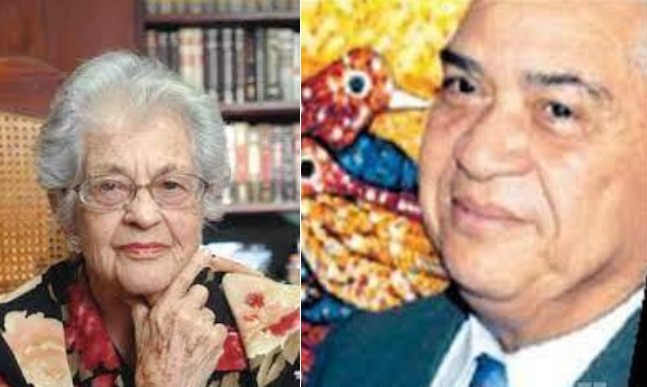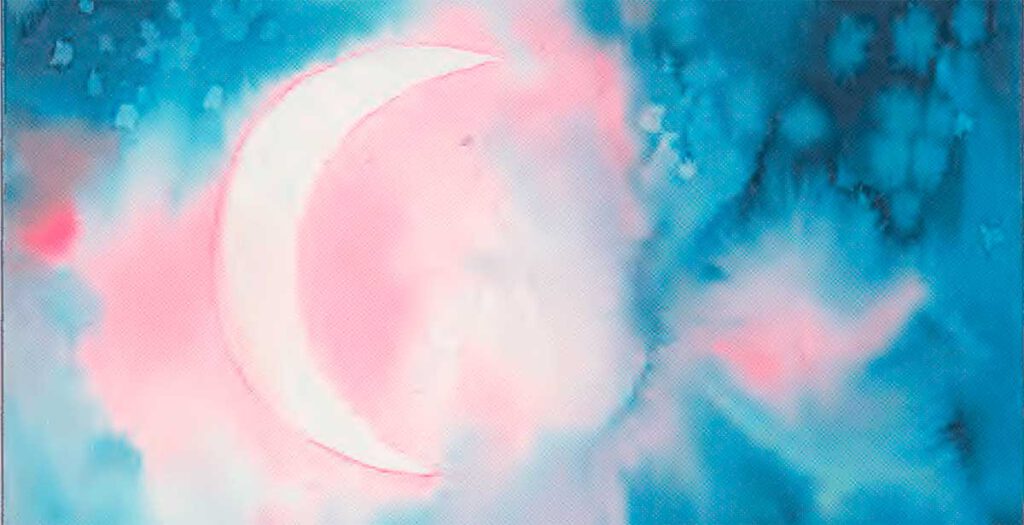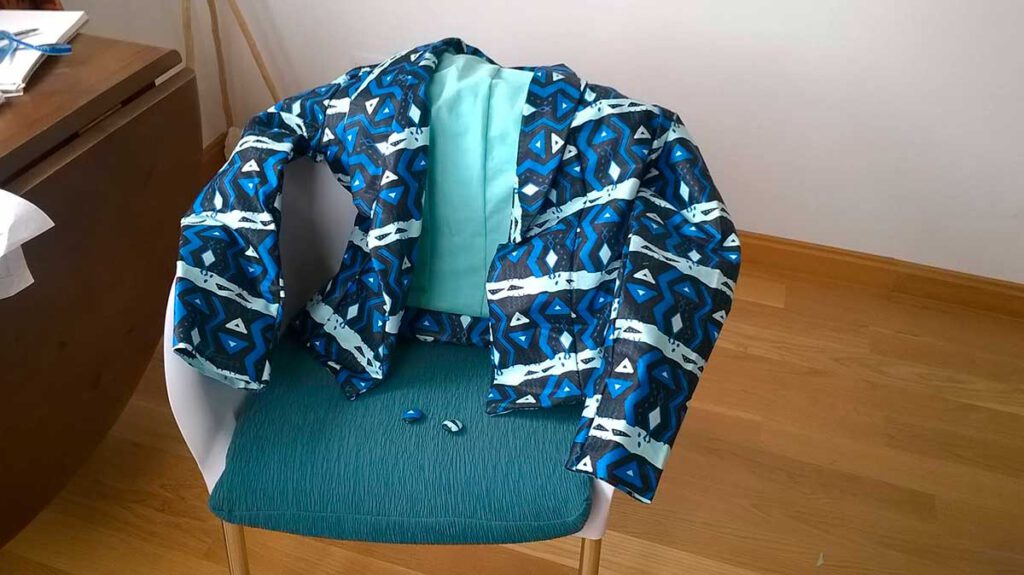This Homage to the Spaniard María Ugarte, who was the first female journalist in the Dominican Republic and a great researcher of history and art; and to the Dominican Cándido Bidó, a sublime painter and tremendous fighter for giving opportunities to the people of his country, after the death of both of them just a few days apart, in March 2011, was published in the Dominican newspaper Listín Diario on 10 March 2011 through the good offices of my friend, the journalist and poet Luis Beiro.
The digital version in Spanish-Castilian can be accessed by clicking here: https://listindiario.com/ventana/2011/03/10/180399/homenaje-a-las-bellezas.html
Homage to the beauties
For someone who, like me, loves deeply and passionately that venerated Island of Love; that place where paradise exists both in its landscapes and in its people; that blessed island shared by the Dominican Republic and Haiti… For someone who, like me, loves it, to learn that in a matter of days two very, very special beings have left that land is, to say the least, a cold shock.
As the man who may have been the Best People’s Poet in the World, Miguel Hernández, said, and who died a much less dignified death in a much lonelier and sadder place: he died of tuberculosis in a Spanish prison at the beginning of the infamous Franco dictatorship… As Miguel Hernández said: ‘A hard slap, an icy blow,/ an invisible and murderous axe blow,/ a brutal push has knocked you down’.
A brutal push has knocked you both down, you, María Ugarte, and you, Cándido Bidó. Two beings who, if you had something in common, above and beyond your deep and sincere love for the World, World with a capital W and without borders… if you had something in common it was your Eternal Search for Beauty. Hence, I wanted this humble tribute to you both and to the Beings who brought you into this world and to the Beings you left in this world… I wanted this small tribute to be called ‘Homage to the Beauties’, because you were two infinitely beautiful beings, Beautiful Inside and Out… and that is the kind of beauty that counts, that leaves a deep mark, that leaves a mark for posterity and eternity.
They say that in eternity we will all meet again. Well, both of you should know that from today I have one more reason for joy, for immense joy, in knowing that on the day I enter eternity, there will be two wonderful beings there, whom I venerate, respect and adore, and with whom I will meet again.
You may say that Cándido painted and María wrote and that they had nothing in common. You can talk all you like. Both were Immense Beings in their own right… and very few people can boast of belonging to such a select human category.
Cándido, let me start by praising María and then I’ll turn to you, OK?
María, Doña María Ugarte… Where to start? María was, is and always will be a woman, as we say in the country where we were both born, Spain, ‘a woman to be reckoned with’. A woman who broke the moulds that have oppressed the fairer sex, the female gender, since the horrendous patriarchy put its stamp on this beautiful planet. María studied at the University of Madrid in the years prior to the Spanish civil war, when it was still ‘the private preserve of the male hunt’. María was pure adventure in life and life in adventure. She set sail for the west married to a Russian and on this island, on this blessed island, the Dominican Republic, she continued to break the moulds. She was the first woman journalist in this country. And at the beginning she was only sent to write reports in the ‘crime pages’ and it was not because someone gifted her anything, but because of her perseverance, her effort and her own merit, that over time she managed to climb and climb and climb until she became the Spanish woman who has done the most and the best in the Dominican Republic to preserve and honour the history, the architecture and the people, in short, to honour the culture of that country.
She, with the immense modesty that characterised her and that honours her, ‘knew palaeography’ and dedicated unpaid hours of invisible effort to ‘translating’ the texts in the archives that were illegible to all of us who did not have the training that she had.
And with the passing of the years and time – and her second marriage and the vicissitudes of any destiny – she left journalism and devoted herself to research and put her excellent pen at the service of Dominican Art (again, art with a capital A)… and with special care and tenderness for art made by Dominican women. From beginning to end, María was a self-made woman, fighting for women. And what better week to honour her than this, when we celebrate International Working Women’s Day. And she, who died at the age of 97 and ‘with her boots on’, was a tireless and lucid worker until her last day.
Finally, I would like to highlight a perhaps lesser-known side of her, again in her modesty. She is generally praised for her knowledge of the colonial era and what she contributed to its rescue. Well, I agree and I have said so above. But perhaps what few people know is that this great woman that María Ugarte was and is had one of the best private collections on Taino literature on the island and not only did she have it, but she also opened it up to all of us who, with a real desire to learn, sought to nourish ourselves from the original sources. And it is important not to forget that María was one of the people who most supported another Giant of Taino Culture during his lifetime, the Spanish-Cuban professor Juan José Arrom, that fantastic and humble man who rescued for humanity the most valuable book that the Island of Hispaniola has ever given, in my humble opinion, and that is the pamphlet in which Friar Ramón Pané collected first-hand accounts of the wonders of the Taíno world (‘About the Antiquities of the Indians’). Arrom died five years ago at the age of 95. Another joy for the reunion of eternity.
And if María was the prototype of the Woman Warrior, Cándido was the prototype of the Man Warrior.
Where to start, Cándido, Cándido Bidó? Where? I think that the best thing one can do with you, after paying you a heartfelt bow of respect, is to tell the world that you were The Best People’s Painter in the World.
In the four years I spent in the Dominican Republic (2003-2007) working as Cultural and Cooperation Counsellor to the Spanish Embassy, I heard many ‘art connoisseurs’ say ‘barbarities’ about your work, that it was too simple, that the palette was not very varied, that, that, that, that. Back and forth.
I’m sure they are all ‘more knowledgeable than I am’. I have no doubt about that. But to anyone who wants to hear me, I will say out loud that you knew how to capture the Dominican spirit on canvas like no one else. Why? Because all your works have three qualities that all ordinary Dominicans have and that make them such, such Great Human Beings. Your paintings – and your people – have Joy, Simplicity and Harmony. That your palette is restricted, you imposed it on yourself as a distinctive, perfect feature, that Simplicity was your ‘trademark’. That your motifs are everyday, perfect, they capture the Harmonious Joy of your land, that country in which you were born and for which you gave your all, and where miracles happen every day in the everyday… and it is in that exaltation of the value of the everyday that your people are masters in their own right.
And this must be said out loud, not for you, which I know would be too big for you, so modest are you, but for your children and wife, from whom you deprived of a substantial inheritance after your death, only and only to give so much, so much, so much in life to so many humble people in your country, for whom you wanted a better future and less hardship than the one you went through. I, who have seen you build your Museum of Bonao, from the first stone until it was a reality, can tell the world that you have done with your personal fortune what I have never seen anyone else in this world do. You wanted to create a centre that would teach trades to the most disadvantaged so that they could earn a living with dignity. Hats off to you. Well, you achieved your dream… and a dream so steeped in humanity, love of humanity and good faith that, if only for that, you are already an exceptional human being.
For all these reasons, I reaffirm my conviction that you were and are the Best People’s Painter in the World… And if this world had more people like you, capable of working tirelessly for the benefit of others, capable of altruism of the heart, capable of giving the best of themselves not only in their art, but in their life and with that magnificent example of life that you, Cándido, gave to us all, because if there were more people like you, this beautiful planet we live on would be so, so different! Hopefully materialism will not conquer the human soul and your example will breathe altruism into many, many human hearts.
And a while ago, when I found out about your death, Cándido, in this London house of mine where I have lived since leaving the Dominican Republic, I sadly mentioned it to my beautiful daughter, a beautiful 13-year-old girl who carries the peace of that island within her. And she said to me: ‘Perhaps Cándido Bidó’s mission, which was to show the poor that they can live a life without spending a lot of money, has already been completed and that is why he has left’.
Whatever the reasons for their departure, know that across the seas you are admired, respected and loved. And I shall now bid you farewell with the final verses of that poem by Miguel Hernández that I paraphrased at the beginning and which is called ‘Elegy’: ‘To the winged souls of the roses/ of the creamy almond tree I bid you come,/ for we have many things to discuss,/ soulmates, mates.’



